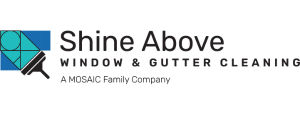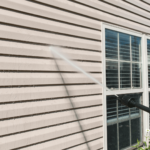Maintaining the exterior of your home is essential for both curb appeal and the longevity of its materials. As your trusted local home exterior detailing experts, we feel obliged to be as helpful as possible by addressing commonly asked questions and concerns that arise from time to time. During this beautiful summer, we’ve handled numerous pressure washing jobs. Unavoidably, we’ve encountered the issue of oxidation on vinyl siding as well as metal roofing. If you’re unfamiliar with oxidation, its appearance, how to eliminate it, and who can help you with it, don’t worry. That’s precisely why we’ve written this article – to provide answers to common questions and offer solutions to problems. As you read on, you’ll gain a better understanding of the concept of oxidation within your home.
Let’s dive into it right now!
1. Oxidation on Vinyl Siding: A Common Concern
It’s crucial to discern between oxidized and merely dirty vinyl siding. You might wonder, what sets them apart? Allow us to clarify. Oxidation refers to a chemical process wherein a material reacts with oxygen or other elements, resulting in a change in its composition and appearance. On the other hand, dirty siding accumulates surface-level grime, such as dust, dirt, and pollutants. The distinction lies in the depth of the issue and its impact on the overall look of your home.
To paint a clear picture, let’s compare oxidized vinyl siding with siding that’s simply dirty. Oxidized vinyl siding exhibits a faded and chalky appearance, resembling a layer of powdery residue on the surface. This chalkiness is a telltale sign of chemical reactions occurring over time due to exposure to elements like sunlight (UV Radiation), air pollutants, and moisture. As vinyl siding falls victim to oxidation, its once-vibrant colors gradually fade, leaving behind a lackluster façade that can drastically affect your home’s curb appeal.
In contrast, siding that’s just dirty might have a more uneven distribution of dirt, grime, and stains. While both cases can mar the beauty of your home’s exterior, oxidation poses a more formidable challenge to restore the siding’s original vibrancy.
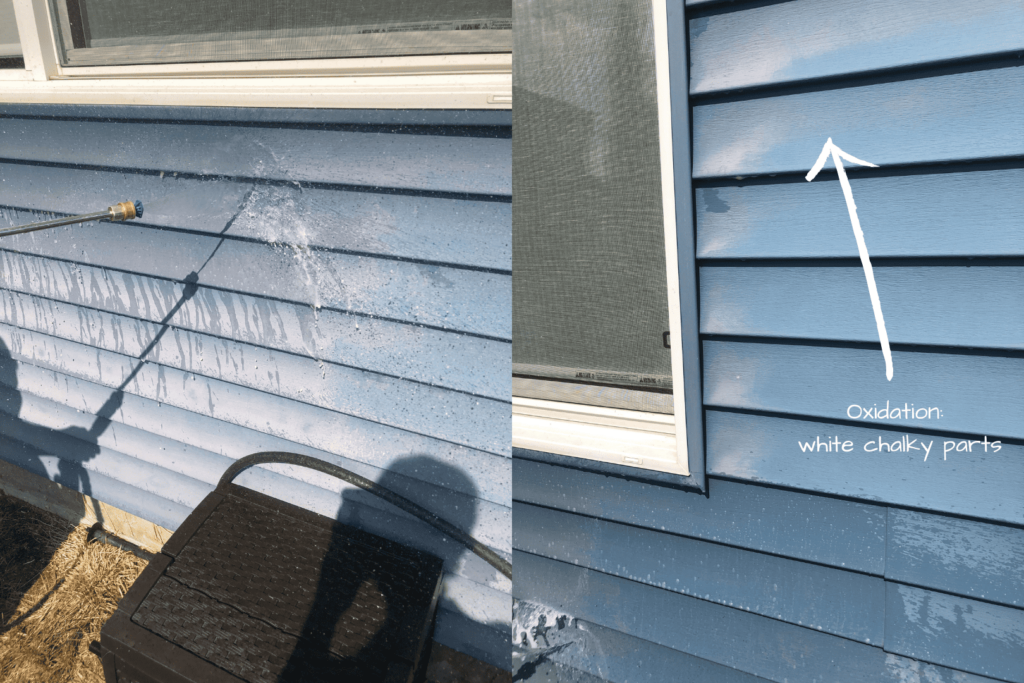
2. Will Pressure Washing Remove Oxidation?
Pressure washing, often characterized by its powerful spray of water, is indeed an invaluable tool for eliminating dirt, grime, and surface stains. It excels at restoring the immediate appearance of exterior surfaces. When your vinyl siding has accumulated dirt or mold, pressure washing can be your go-to solution. Yet, the complexity of oxidation presents a challenge that the pressure washing system cannot fully surmount. Oxidation, as a chemical process, affects the composition of the vinyl surface at a deeper level than superficial dirt and stains. The chalky layer that oxidation creates is deeply ingrained into the material, resisting the sheer force of water pressure. Consequently, relying solely on pressure washing to address oxidation is impossible to restore your vinyl siding to its original luster. This means that while the dirt will be removed, the oxidation will still persist. To truly combat oxidation and unveil the vibrant colors beneath, specialized oxidation removal treatments are necessary. These treatments involve targeted cleaning agents and techniques designed to break down the oxidized layer and restore the siding’s initial brilliance.
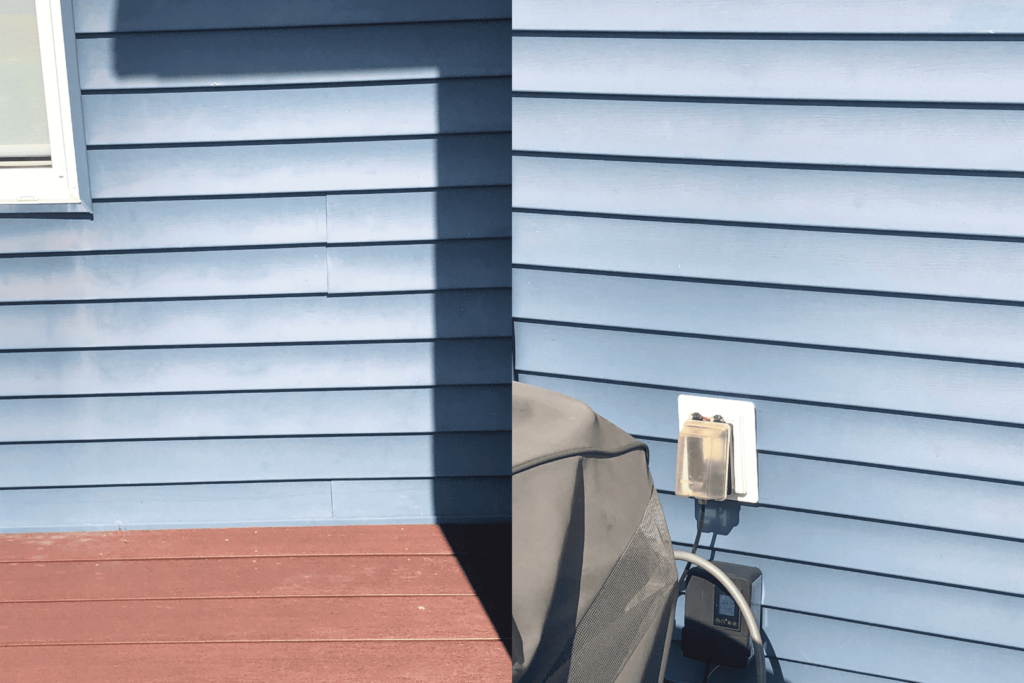
3. How to Remove Oxidation from Vinyl Siding:
To truly restore the vibrancy of oxidized vinyl siding, a specialized oxidation removal treatment is required. But good news! Pressure washing is usually the first step in restoring the surface. The process of oxidation removal entails a thorough cleaning and washing of the vinyl siding first, before applying the necessary chemicals to penetrate the oxidized vinyl surface. This process involves using appropriate cleaning agents and techniques to break down the oxidized layer and reveal the original color underneath. The special chemicals will be able to get rid of the oxidized residue after treatment. And then, the finishing touch often involves applying a coat of UV protection to the vinyl, as UV radiation is the primary driver behind vinyl oxidation. Alternatively, you can opt to paint over it. A fresh coat of paint (many exterior-specific paints now include UV blockers and weather seals) can rejuvenate your exterior’s appearance and safeguard your siding for years to come.
Shine Above Window and Gutter Cleaning specializes in pressure washing, and we would be delighted to clean the vinyl surface for you before you engage the professional oxidation treatment team for the specialized process. For inquiries about painting and sealing, you’re welcome to consult our sister company, Colour Envy Painting, for a transformative exterior makeover.
4. Is it OK to pressure wash a metal roof?
While pressure washing is generally safe for cleaning metal roofs, it’s crucial to exercise caution. Using excessive pressure or improper techniques could potentially cause damage to the roofing material or worsen the oxidation issue. A low-pressure wash, often referred to as a ‘soft wash‘, using a garden hose, is typically sufficient to remove most dirt and debris buildup on a metal roof. To ensure the longevity and appearance of your metal roof, it’s highly recommended to consult professionals who possess a nuanced understanding of pressure washing metal roofs.
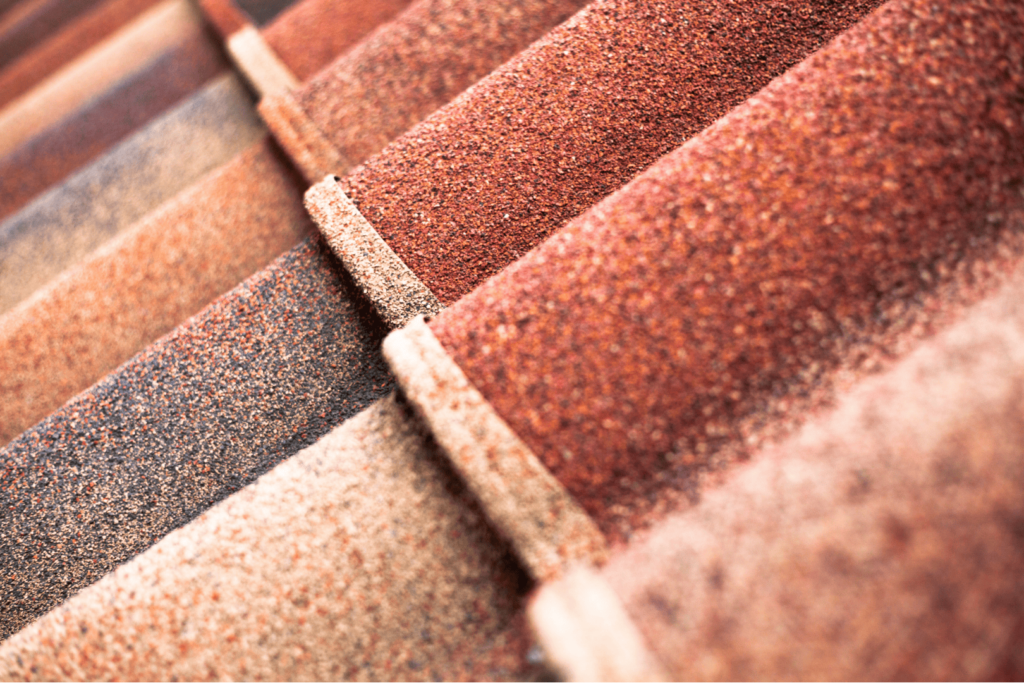
5. What removes oxidation from metal roof?
Removing oxidation on metal roofs, much like on vinyl siding, demands a targeted treatment beyond only pressure washing. Begin by preparing a mild cleaning solution, such as car washing soap or mild detergent mixed with water. With your cleaning solution ready, equip yourself with a sponge, microfiber cloth, or a soft-bristle brush. These tools allow you to apply controlled pressure while scrubbing and cleaning the metal surface. It’s important to note that any form of treatment will yield better results after the surface has been cleaned thoroughly. For the treatment solution application, it’s highly advisable to seek professional assistance, especially since certain solutions can produce toxic fumes when they react with metal.
To sum up the key takeaways from this article:
1. Oxidation is not equivalent to dirt; pressure washing can only eliminate dirt, not oxidation.
2. If your goal is to reverse the effects of oxidation and restore the original appearance, a specialized treatment is required – a process distinct from regular washing and cleaning.
3. Seeking advice from professionals is always a recommended approach.
If you have additional inquiries, don’t hesitate to reach out to Shine Above for assistance! Thank you for reading!
